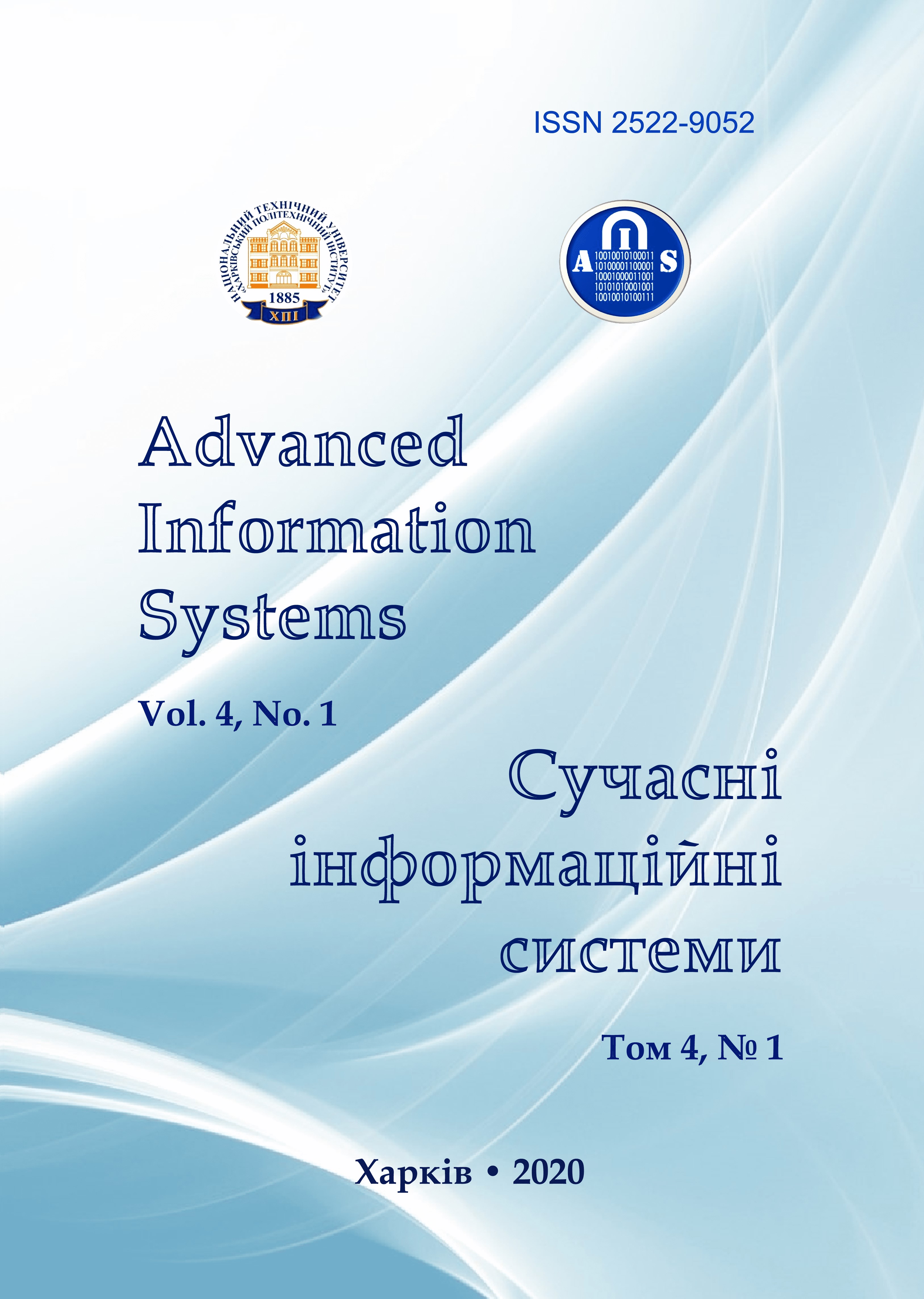IMPLEMENTATION OF THE ARITHMETIC ADDITION OPERATION IN THE SYSTEM OF RESIDUAL CLASSES
Main Article Content
Abstract
The subject of the article is the development of a method for implementing the arithmetic operation of addition numbers that are represented in the system of residual classes (SRC). This method is based on the use of the principle of circular shift (PCS). The purpose of the article is to reduce the time it takes to implement the arithmetic operation of addition numbers that are represented in the SRC. Tasks: to analyze and identify the shortcomings of existing number systems that are used in the construction of computer systems and components, to explore possible ways to eliminate identified deficiencies, to evaluate the implementation time of the arithmetic addition operation based on the use of the developed method. Research methods: methods of analysis and synthesis of computer systems, number theory, coding theory in SRC. The following results are obtained. It is shown that the basic principle of the implementation of arithmetic operations in positional number systems is the use of binary adders. Moreover, the use of such number systems determines the presence of inter-bit connections, which in turn increases the time it takes to implement arithmetic operations, and also cause errors to occur. It is established that the use of a non-positional number system in residual classes allows us to eliminate these shortcomings, through the use of the basic properties of SRC. The peculiarity of the developed method is the result of the operation of adding numbers can be found by successive cyclic shifts of the bits of the contents of the data blocks by the corresponding SRC modules. The use of PCS allows eliminating the influence of inter-bit bonds between the residues of the processed numbers, which allows to reduce the implementation time of the operation of adding two numbers in the SRC. Conclusions. The results of the studies showed that the use of SRC allows to eliminate the existing shortcomings of positional number systems, and also improves the speed of implementation of arithmetic operations.
Article Details
References
Kuznetsov, O., Lutsenko, M. and Ivanenko, D. (2016), “Strumok stream cipher: Specification and basic properties”, Proc. 3rd Intern. Sci.-Pract. Conf. Problems of Infocommunications. Science and Technology (PICS&T), Kharkiv, pp. 59-62.
Krasnobayev, V. A. (2007), “Method for Realization of Transformations in Public-Key Cryptography”, Telecommunications and Radio Engineering, vol. 66, no. 17, pp. 1559–1572.
Tariq Jamil (2013), Complex Binary Number System. Algorithms and Circuits, India: Springer, 83 p.
Ananda Mohan (2016), Residue Number Systems, Birkhäuser Basel, 351 p.
Chervyakov, N. I. (2017), “Residue-to-binary conversion for general moduli sets based on approximate Chinese remainder theorem”, International Journal of Computer Mathematics, vol. 94, No. 9, pp. 1833-1849.
Kasianchuk, M., Yakymenko, I., Pazdriy, I. and Zastavnyy, O. (2015), “Algorithms of findings of perfect shape modules of remaining classes system”, The Experience of Designing and Application of CAD Systems in Microelectronics, Lviv, pp. 316-318, DOI: https://doi.org/10.1109/CADSM.2015.7230866
Amir Sabbagh Molahosseini, Leonel Seabra de Sousa and Chip-Hong Chang (2017), Embedded Systems Design with Special Arithmetic and Number Systems, Springer International Publishing, 389 p.
Patterson, D.A. and Hennessy, J.L. (2016), Computer Organization and Design: The Hardware Software Interface: ARM Edition [The Morgan Kaufmann Series in Computer Architecture and Design], 1st Edition: Morgan Kaufmann, 720 p.
Yadin, A. (2016), Computer Systems Architecture, CRC Press, 526 p.
Valvano, J. (2017), Embedded Systems: Real-Time Operating Systems for Arm Cortex M Microcontrollers [2nd ed. edition], CreateSpace Independent Publishing Platform, 486 p.
Hsu, J. Y. (2017), Computer Architecture: Software Aspects, Coding, and Hardware, CRC Press, 456 p.
Zirnbauer, M. R. (2018), “Symmetry classes”, Oxford Handbooks Online,
DOI: https://doi.org/10.1093/oxfordhb/9780198744191.013.3
Krasnobayev, V.A., Koshman, S.A. and Mavrina, M.A. (2014), “A method for increasing the reliability of verification of data represented in a residue number system”, Cybernetics and Systems Analysis, vol. 50, Issue 6, pp. 969-976.
Krasnobayev, V.A., Yanko, A.S. and Koshman S.A. (2016), “A Method for arithmetic comparison of data represented in a residue number system”, Cybernetics and Systems Analysis, vol. 52, Issue 1, pp. 145-150.
